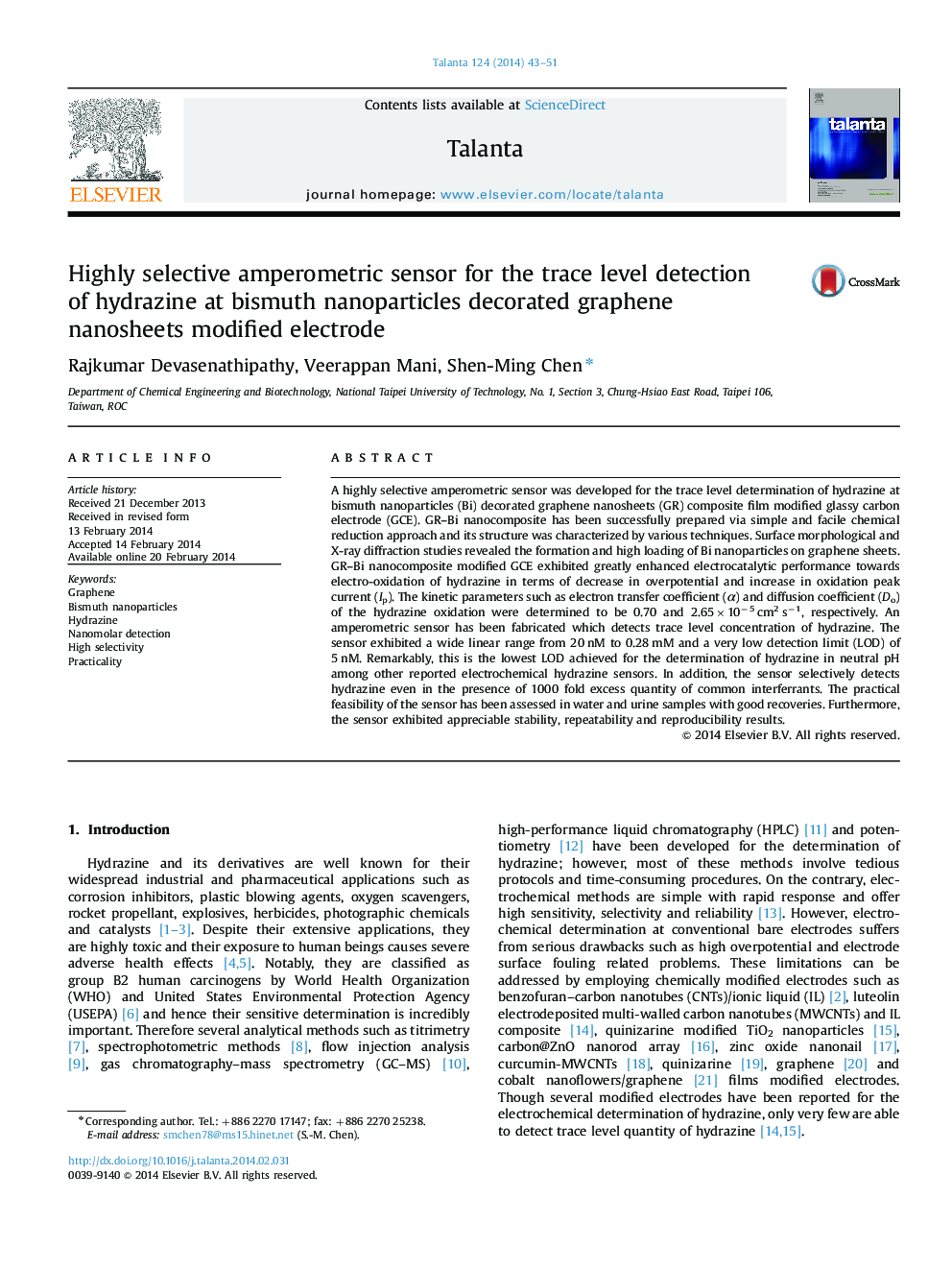| کد مقاله | کد نشریه | سال انتشار | مقاله انگلیسی | نسخه تمام متن |
|---|---|---|---|---|
| 1242306 | 1495811 | 2014 | 9 صفحه PDF | دانلود رایگان |
• Preparation of graphene–Bi nanocomposite by simple and facile chemical method.
• Characterization of the nanocomposite by SEM, EDX, XRD, AT-FTIR and CV techniques.
• Electrocatalysis and amperometric sensor towards trace level detection of hydrazine.
• High selectivity in the presence of 1000-fold excess quantity of common interferrants.
• Practicality in water and urine samples.
A highly selective amperometric sensor was developed for the trace level determination of hydrazine at bismuth nanoparticles (Bi) decorated graphene nanosheets (GR) composite film modified glassy carbon electrode (GCE). GR–Bi nanocomposite has been successfully prepared via simple and facile chemical reduction approach and its structure was characterized by various techniques. Surface morphological and X-ray diffraction studies revealed the formation and high loading of Bi nanoparticles on graphene sheets. GR–Bi nanocomposite modified GCE exhibited greatly enhanced electrocatalytic performance towards electro-oxidation of hydrazine in terms of decrease in overpotential and increase in oxidation peak current (Ip). The kinetic parameters such as electron transfer coefficient (α) and diffusion coefficient (Do) of the hydrazine oxidation were determined to be 0.70 and 2.65×10−5 cm2 s−1, respectively. An amperometric sensor has been fabricated which detects trace level concentration of hydrazine. The sensor exhibited a wide linear range from 20 nM to 0.28 mM and a very low detection limit (LOD) of 5 nM. Remarkably, this is the lowest LOD achieved for the determination of hydrazine in neutral pH among other reported electrochemical hydrazine sensors. In addition, the sensor selectively detects hydrazine even in the presence of 1000 fold excess quantity of common interferrants. The practical feasibility of the sensor has been assessed in water and urine samples with good recoveries. Furthermore, the sensor exhibited appreciable stability, repeatability and reproducibility results.
Figure optionsDownload as PowerPoint slide
Journal: Talanta - Volume 124, 15 June 2014, Pages 43–51
